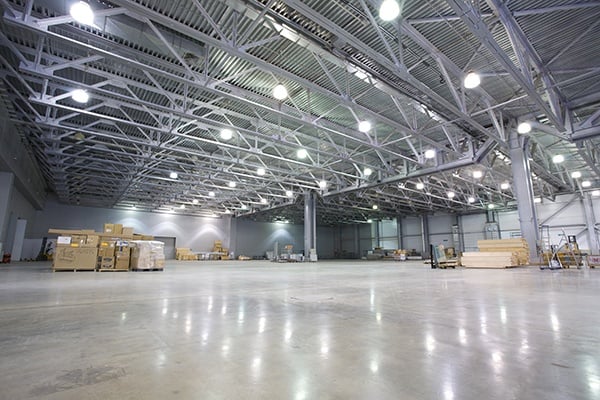
Warehouse space is no longer just four walls and a relatively high roof. Given the complexity of modern supply chains, your warehouse space could be the most complicated building in your company's real estate portfolio. As you look at warehouse properties, here are the seven must haves that you should require:
1. Data Connectivity
It might seem counterintuitive that the first must have in a warehouse would be strong data connections. After all, a warehouse isn't a data center. While this is true, logistics in the 21st Century are extremely information-intensive. With warehouses being very tightly integrated into most businesses, they need the ability to share shipping and inventory data with the rest of the organization. Warehouse management systems, RFID taggers and automated shipping systems all are only as powerful as their Internet connection allows them to be.
2. Divisibility
Supply chains shift over time, so your warehouse space should have room to grow or to be split up so that you can share it with another tenant as your needs change. Choosing a space that has multiple doors makes it easier to divide between different internal departments or to share with someone else as a subtenant.
3. Global and Multimodal Connections
Today's local distribution center could be tomorrow's reverse logistics hub, coordinating returns for global shipment. With the possible exception of small hyper-local facilities, your warehouse space should enjoy a location that gives it access to a wide range of shipping options. Road and, for most larger facilities, rail spurs are givens. Shipping and international air cargo facilities are also of crucial importance.
4. The Right Clear Height
While the trend in big box distribution centers is to build them as tall as possible, a building with a clear height exceeding 40 feet might not be the right fit for you. Unless you can efficiently use that extra height, you might end up with a lower total cost of occupancy in a seemingly less desirable 24 or 30 foot building.
5. Adequate Lot Space
Your warehouse doesn't just need to have enough room to hold what comes off of delivery trucks and rail cars. It also needs to have a site layout that allows those trucks to get in and out. Make sure that any warehouse space you look at offers ample room for employee parking and for trucks to not just enter and exit but also to maneuver and turn around.
6. Energy Efficient Lighting and HVAC Systems
Compared to office or retail space, warehouse space is relatively affordable on a per-square foot basis. Other than rent, your only significant operating costs are likely to be property tax reimbursements and utilities. While property taxes can be hard to control, utilities are easier to manage. High efficiency lighting and HVAC systems achieve significant savings, just due to the large quantity of space that needs to be lit and climate controlled.
7. Skilled, Affordable Labor
Especially if your company operates on just-in-time logistics principles, your warehouse is of crucial strategic importance. Even the best site is only as good as the people that work in it. As such, look for warehouse spaces in markets that offer a skilled, low-cost workforce that is not subject to onerous local regulations.
Here are some other great Warehouse articles:
4 Secrets to Commercial Warehouse Leasing
A Tenant's Guide to Warehouse Leases
Tips for Maximizing Your Industrial Utilization
Subscribe to our blog for more CRE tips!!








